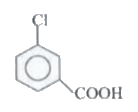The compound C2H4Cl2 has 2 isomers and they can be distinguished by the reaction with
aq. KOH
alc.KOH
bromine water
NaNH2
The correct Answer is:A
To solve the problem, we need to identify the two isomers of the compound C₂H₄Cl₂ and determine how they can be distinguished from each other through chemical reactions.
Step 1: Identify the Isomers
The compound C₂H₄Cl₂ can have two structural isomers:
1. Geminal Isomer (Geminal Dihalide): Both chlorine atoms are attached to the same carbon atom. The structure is CHCl₂-CH₂.
2. Vicinal Isomer (Vicinal Dihalide): The chlorine atoms are attached to adjacent carbon atoms. The structure is CH₂Cl-CHCl.
Step 2: Write the Structures
- Geminal Isomer:
CHCl2−CH2
- Vicinal Isomer:
CH2Cl−CHCl
Step 3: Determine the Reaction Conditions
To distinguish between these two isomers, we will consider various reagents. The key is to find a reagent that reacts differently with each isomer.
Step 4: Test with Aqueous KOH
When we react both isomers with aqueous KOH, we can observe the following:
- Geminal Isomer:
- The reaction will lead to the formation of an alcohol (due to the substitution of Cl with OH).
- Vicinal Isomer:
- The reaction will also lead to the formation of an alcohol, but due to the different arrangement of chlorine, it will form a different product (aldehyde).
Step 5: Analyze the Products
- The product from the geminal isomer will be a primary alcohol.
- The product from the vicinal isomer will yield an aldehyde after dehydration.
Step 6: Compare Boiling Points
- The boiling point of the alcohol (from the geminal isomer) will be greater than that of the aldehyde (from the vicinal isomer).
Conclusion
Thus, the two isomers of C₂H₄Cl₂ can be distinguished by their reaction with aqueous KOH, leading to different products (alcohol vs. aldehyde) and differing boiling points.
Final Answer
The compound C₂H₄Cl₂ has 2 isomers that can be distinguished by the reaction with aqueous KOH.
---
The compound C₂H₄Cl₂ can have two structural isomers:
1. Geminal Isomer (Geminal Dihalide): Both chlorine atoms are attached to the same carbon atom. The structure is CHCl₂-CH₂.
2. Vicinal Isomer (Vicinal Dihalide): The chlorine atoms are attached to adjacent carbon atoms. The structure is CH₂Cl-CHCl.
- Geminal Isomer:
CHCl2−CH2
- Vicinal Isomer:
CH2Cl−CHCl
To distinguish between these two isomers, we will consider various reagents. The key is to find a reagent that reacts differently with each isomer.
When we react both isomers with aqueous KOH, we can observe the following:
- Geminal Isomer:
- The reaction will lead to the formation of an alcohol (due to the substitution of Cl with OH).
- Vicinal Isomer:
- The reaction will also lead to the formation of an alcohol, but due to the different arrangement of chlorine, it will form a different product (aldehyde).
- The product from the geminal isomer will be a primary alcohol.
- The product from the vicinal isomer will yield an aldehyde after dehydration.
- The boiling point of the alcohol (from the geminal isomer) will be greater than that of the aldehyde (from the vicinal isomer).
Thus, the two isomers of C₂H₄Cl₂ can be distinguished by their reaction with aqueous KOH, leading to different products (alcohol vs. aldehyde) and differing boiling points.
The compound C₂H₄Cl₂ has 2 isomers that can be distinguished by the reaction with aqueous KOH.
Topper's Solved these Questions
- JEE MAIN REVISION TEST - 1 | JEE - 2020 BOOK - VMC MODULES ENGLISHCHAPTER - JEE MAIN REVISION TEST - 1 | JEE - 2020 EXERCISE - CHEMISTRY ( SECTION 2)
5 Videos
- JEE MAIN REVISION TEST - 1 (2020)BOOK - VMC MODULES ENGLISHCHAPTER - JEE MAIN REVISION TEST - 1 (2020)EXERCISE - CHEMISTRY - SECTION 2
5 Videos
- JEE MAIN REVISION TEST - 10| JEE -2020BOOK - VMC MODULES ENGLISHCHAPTER - JEE MAIN REVISION TEST - 10| JEE -2020EXERCISE - CHEMISTRY (SECTION 2)
5 Videos
Similar Questions
Knowledge Check
Compound A (C7H7Cl) react with aq. KOH at room temperature and give compound D (C7H8O).Another isomer B gives only one mononitration product on treatment with HNO3+H2SO4 mixture. Isomer C give compound E (C7H5O2Cl) on heating with KMnO4 solution.E gives 3-chloro-4-nitrobenzoic acid as major product. Identify compound D.
A B
B C
C D
D
In the gaseous phase reaction
C2H4+H2⇔C2H6, the equilibrium constant can be expressed in the units to :
View SolutionA complex with molecular formula Co(en)2Cl2 has two isomers A and B '.Isomer 'A' showed a higher dipole moment value Q.Isomer 'A' is
View SolutionAt 500K, the equilibrium constant for reaction cis−C2H2Cl2⇔transa−C2H2Cl2 is 0.6. At the same temperature, the equilibrium constant for the reaction trans−C2H2Cl2⇔cis−C2H2Cl2 will be
View SolutionA hydrocarbon 'A' (C4H8) on reaction HCl gives a compound 'B', (C4H9Cl) which on reaction with 1 mol of NH3 gives compounds 'C' (C4H11N). On reacting with NaNO2 and HCl followed by treatment with water compound 'C' yields an optically active alcohol, 'D'. Ozonolysis of 'A' given 2mols of acetyldehyde. Identify compound 'A' to 'D'. Explain the reaction involved.
View SolutionAn organic compound (A) , C4H8Cl2 on hydrolysis forms another compound (B) , C4H8O.
If (B) does not responds to iodo form test , then identify possible structures of (A) and (B).
View SolutionThe reaction of compounf P with CH3MgBr (excess) in (C2H5_(2)O followed by addition of H2O give Q the compound Q on treatment with H2SO4at 0∘ C gives R. the reaction of R with CH3COCl in the presence of anhydrous AlCl3inCH2Cl2 followed by treatment with H2O produces compound S. [Et in compound P is ethyl group] The product S is

View SolutionThe reaction of compounf P with CH3MgBr (excess) in (C2H5_(2)O followed by addition of H2O give Q the compound Q on treatment with H2SO4 at 0∘ C gives R. the reaaction of R with CH3COCl in the presence of anhydrous AlCl3 in CH2Cl2 followed by treatment with H2O "produces compound S. [Et in compound P is ethyl group]
The reaction, Q to R and R TO S, are
View Solution
